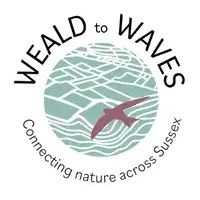🌿 Nature survey: Getting to know our Gardens
By Amy Hurn - 02 May 2023
🐝 What a fantastic start to 2024 for nature! Across Sussex with over 400 pledges now made to Gardens & Greenspaces. The dots are spreading across the Weald to Waves map, and we can see the momentum building to connect our spaces and communities for wildlife.
Gardens of all sizes, allotments, community orchards, churchyards and community spaces have been signing up and we are increasingly hearing from community groups, schools and businesses across the county, all wanting to make space for nature in Sussex.
Our first baseline survey – ‘About Your Space’ – has been completed by nearly a quarter of members already. From this we can start to build a picture of what our pledged gardens and greenspaces have to offer wildlife and what we need to do to improve habitats and connectivity between them.
Baseline surveys are vital as they give us a record of that state of nature at the start of this amobition project. We can use this initial data set to understand how nature is responding and, hopefully, increasing and improving as a result of our action. In years to come, this survey will provide a crucial measurement of how far we've come in restoring landscape connectivity.
Results So Far
We can see how important these spaces are for gardening, relaxation and socialising, with over 90% of them being used either daily or several times a week. Growing fruit and vegetables and nature recovery efforts are also important uses for our members.
However, around 90% of pledged spaces are bordered by fences and over half of members perceive their spaces to be mostly or completely impermeable for wildlife. We need to look at this; how can we improve connectivity for different species? Can we grow more climbing plants along our hard landscaping? Can we open up a gap underneath to let small mammals roam? Can we replace some fencing with native hedgerow shrubs or trees?
It's also great to hear that around 70% of our pledged gardens and greenspaces have some form of wildlife pond – but some spaces do not provide any water sources at all for wildlife. Let’s make that a priority this year and ensure our local wildlife has plentiful opportunities to drink, shelter and breed in safety across our busy landscape.
Rally your communities
As we head into this new year, we are busy creating opportunities for members to start monitoring and recording wildlife in their spaces and these survey results will help inform us at to actions we all need to take.
We need to do all we can to creating stepping stones for nature across areas of housing and farmland.
So, if you have not yet signed up to Gardens & Greenspaces, please join our growing Weald to Waves community here.
As part of our network, you will get advice and support, invites to events and even links to accessing tools, small grants and volunteer capacity.
If you are a member but have not yet completed the **‘About Your Space’ **survey’ that was emailed to you, please have that tea break and tell us about your space. You can help us understand where we all need to focus our efforts in 2024.
We are also delighted to start 2024 by welcoming our first Community Champions - Greening Steyning – who are already spreading the word about Weald to Waves in their local area and incorporating its aims into their many wonderful projects. Read more from them here. We will be working with them to host events, share knowledge and collect data.
Could you or your group be a ‘Community Champion’ too? Get in touch and tell us more!
Amy Hurn Gardens & Greenspaces Coordinator, Weald to Waves

